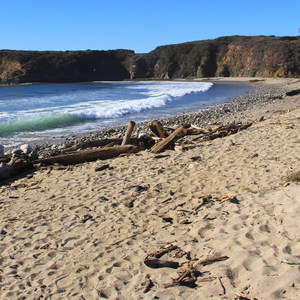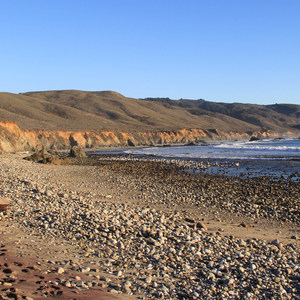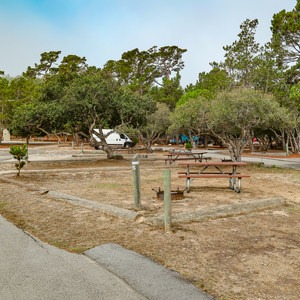Located on the northern stretch of the Big Sur coast, Andrew Molera State Park is the largest of the state parks within the magnificent Big Sur area. With over 20 miles of hiking trails, a scenic and accessible beach, an abundance of wildlife, and the Big Sur River, the park offers something for just about everyone.
Many come to Andrew Molera to access Andrew Molera State Beach, a beautiful coastal gem and one of the few accessible beaches within Big Sur. The north end of the beach is framed by Molera Point and provides shelter to the sandy strand lying adjacent to the Big Sir River mouth and estuary. The beach runs nearly 3 miles to the south, but it becomes rockier and is interrupted by bluff headlands at sections that make access difficult. Sea birds love Andrew Molera and the adjacent waters, as do sea otters, sea lions and migrating gray whales, all of which are frequently spotted here. A small population of steelhead run the Big Sur River in winter. In addition, Molera Point and the Big Sur Rivermouth is home to a semi-consistent right hand wave that breaks on larger northwest, west, and southwest swells. The prevailing northwest winds blow offshore.
Beyond the beach, the trail network within the park explores the bluff tops, meadows, hillsides, and banks of the Big Sur River. Wildlife is frequently encountered on the trails. Deer, bobcat, a variety of birds, and monarch butterflies are some of the local residents. Recommended trails include the Headlands Trail, the loop formed by linking the Bluff, Panorama, and Ridge trails, the Creamery Meadow Trail, and the Beach Trail. Mountain biking and horseback riding is permitted on some trails, though others only allow hiking. Note that Andrew Molera State Park is poison oak territory, so keep an eye out while you are on the trails.
The park provides a first-come, first-served walk-in environmental campground, Trail Camp, that is accessed from the main parking lot via the Headlands Trail or by an alternate path that connects the camp to Highway 1. There are restrooms, 24 campsites, and potable water is available within the campground and at the park’s main parking area
There is one parking area in the park a mile inland from the beach. The loop formed by taking the Beach Trail to the Headlands Trail is a great hike to help you get oriented. If parking is full or you are just looking to avoid the parking fees, you can park on Highway 1 in nearby pullouts and walk in.











Comments
Sign In and share them.